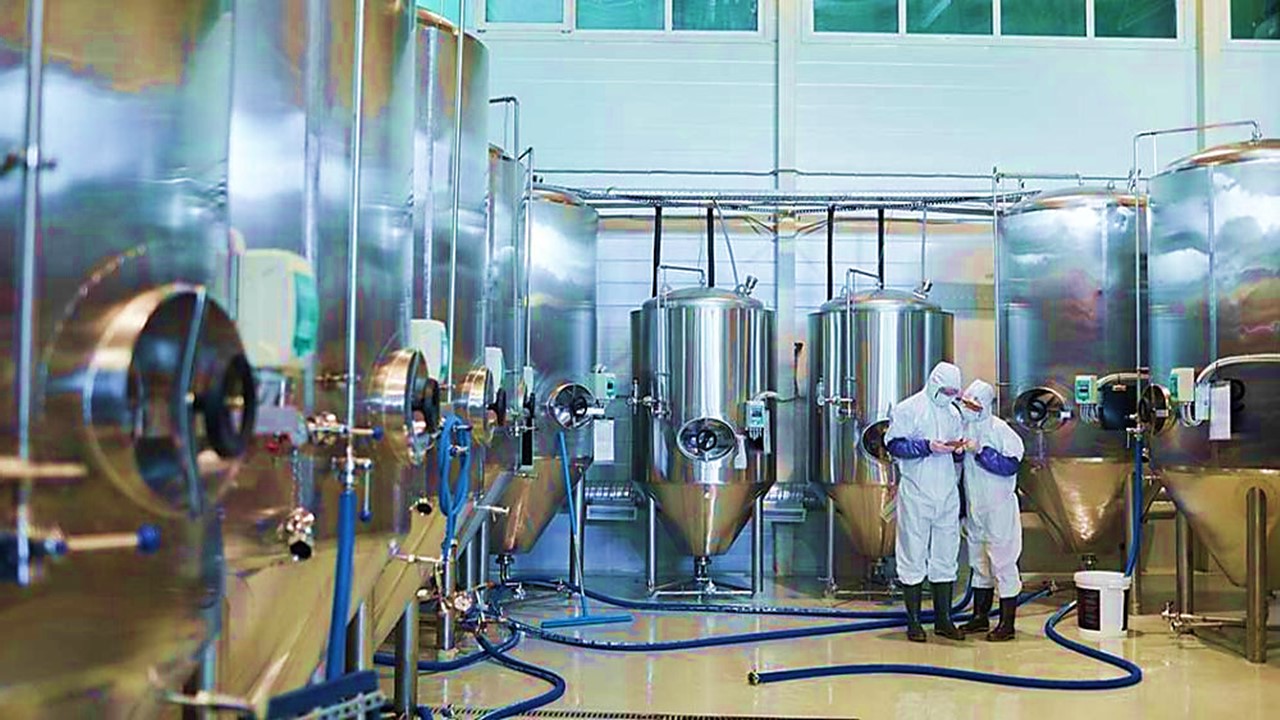The integration of real-time logistics systems with blockchain technology marks a transformative shift in the complex realm of global supply chain management. This integration aims to enhance transparency, security, and efficiency across the entire logistics spectrum. By leveraging decentralized ledgers and instantaneous data transmission, stakeholders can achieve unprecedented levels of operational synchronization and trust.
Real-Time Logistics Systems: The Backbone of Modern Supply Chains
Real-time logistics systems are predicated on the continuous monitoring and management of supply chain activities through advanced technologies such as the Internet of Things (IoT), telematics, and sophisticated data analytics platforms. These systems facilitate the instantaneous acquisition and dissemination of data related to inventory levels, shipment statuses, and transportation conditions.
The implementation of IoT devices, including RFID tags and GPS-enabled sensors, enables the granular tracking of assets throughout the supply chain. These devices collect data points such as geolocation, temperature, humidity, and shock exposure, which are critical for maintaining the integrity of sensitive goods. For instance, in cold chain logistics, maintaining precise temperature control is vital for perishable items; real-time monitoring ensures compliance with specified parameters, thereby mitigating spoilage risks.
Advanced telematics systems integrate vehicular data with centralized platforms, providing insights into fleet performance metrics such as fuel consumption, route efficiency, and driver behavior. This integration allows for dynamic route optimization, predictive maintenance scheduling, and enhanced resource allocation, culminating in reduced operational costs and improved service delivery.
Data analytics platforms process the vast influx of information generated by IoT and telematics devices, employing machine learning algorithms and predictive modeling to forecast demand fluctuations, identify potential supply chain disruptions, and recommend proactive interventions. This predictive capability is instrumental in facilitating agile and responsive supply chain operations.
Blockchain Technology: Establishing Immutable Trust in Logistics
Blockchain technology operates as a decentralized and distributed ledger system, wherein each transaction is cryptographically secured and linked to the preceding one, forming an immutable chain of records. This architecture ensures that once data is recorded, it cannot be altered or deleted, thereby providing a single source of verifiable truth for all stakeholders involved.
In the context of logistics, blockchain’s decentralized ledger facilitates the recording of every transaction and movement of goods across the supply chain. This ensures that all parties have access to a consistent and tamper-proof record of events, enhancing transparency and trust. For example, when a product moves through the supply chain, each step is recorded and stored on a block that everyone within a network can see. The records can’t be modified, so everyone viewing the updates can be confident in their legitimacy.
Smart contracts, a pivotal feature of blockchain technology, are self-executing agreements with terms encoded directly into the blockchain. These contracts automatically enforce and execute predefined conditions without the need for intermediaries. In logistics, smart contracts can automate processes such as payment settlements, customs clearance, and carrier agreements. For instance, upon the delivery of goods and confirmation of receipt, a smart contract can trigger an automatic payment to the supplier, thereby reducing administrative overhead and expediting financial transactions.
Furthermore, blockchain’s cryptographic mechanisms ensure data integrity and security. Each block contains a unique hash, the hash of the previous block, a timestamp, and transaction data. Any attempt to alter the information in a block would change its hash, disrupting the chain and signaling tampering. This feature is particularly valuable in preventing fraud and unauthorized modifications in logistics records.
Synergistic Integration: Real-Time Logistics Meets Blockchain
The amalgamation of real-time logistics systems with blockchain technology engenders a synergistic framework that capitalizes on the strengths of both paradigms. Real-time data acquisition and monitoring systems feed instantaneous information into the blockchain, ensuring that all recorded transactions reflect the most current state of the supply chain.
For example, consider a pharmaceutical supply chain where the transportation of temperature-sensitive vaccines is monitored. IoT sensors continuously track the ambient conditions of the shipment, transmitting data in real-time to a blockchain ledger. If a temperature excursion occurs beyond the acceptable range, the system records this anomaly on the blockchain, triggering alerts to relevant stakeholders and initiating predefined corrective actions through smart contracts. This integration ensures product integrity, regulatory compliance, and provides an immutable audit trail for quality assurance purposes.
In inventory management, the fusion of real-time tracking with blockchain enables precise visibility of stock levels across multiple locations. As products are scanned into or out of warehouses using RFID technology, each transaction is logged onto the blockchain, providing an up-to-date and tamper-proof record of inventory movements. This visibility facilitates just-in-time replenishment strategies, reduces the risk of stockouts or overstocking, and enhances demand forecasting accuracy.
Moreover, the integration streamlines the documentation and verification processes inherent in international trade. Shipping documents such as bills of lading, certificates of origin, and customs declarations can be digitized and stored on the blockchain. Authorized parties can access and verify these documents in real-time, expediting clearance procedures and reducing the potential for document fraud.
Technical Challenges and Considerations in Implementation
Despite the compelling advantages, the implementation of integrated real-time logistics and blockchain systems presents several technical challenges that must be meticulously addressed.
Scalability
The capacity of blockchain networks to handle a high volume of transactions per second is a critical concern in large-scale logistics operations. Traditional blockchain architectures, such as those employed in Bitcoin and Ethereum, encounter limitations in transaction throughput and latency. To mitigate these issues, solutions such as sharding, off-chain transactions, and the development of more efficient consensus algorithms (e.g., Proof of Stake, Byzantine Fault Tolerance) are being explored to enhance scalability without compromising security.
Interoperability
The logistics ecosystem comprises a heterogeneous array of systems, platforms, and stakeholders, each potentially utilizing different technologies and standards. Achieving seamless interoperability between these disparate systems and the unified blockchain ledger necessitates the development of standardized data formats, communication protocols, and application programming interfaces (APIs). Organizations such as the IEEE have recognized the vital role standards will play in the development and adoption of blockchain technologies. The IEEE 3205-2023 standard provides an infrastructure for cross-chain interoperability, including interfaces and protocols for data authentication and communication. Additionally, GS1’s global standards for identification and structured data enable blockchain network users to scale enterprise adoption and maintain a single, shared version of the truth about supply chain and logistics events, increasing data integrity and trust between parties, and reducing data duplication and reconciliation.
Data Privacy and Confidentiality
While blockchain’s transparency is advantageous for traceability, it may conflict with the need to protect sensitive business information. Implementing permissioned blockchains, where access is restricted to authorized participants, can help balance transparency with confidentiality. Advanced cryptographic techniques, such as zero-knowledge proofs and secure multi-party computation, are also being explored to ensure that sensitive data remains confidential while still allowing for verification and validation within the network.
Regulatory Compliance
The integration of blockchain technology into logistics must adhere to a complex web of international regulations and standards. This includes compliance with data protection laws, such as the General Data Protection Regulation (GDPR) in the European Union, which mandates stringent controls over personal data handling and storage. Additionally, industry-specific regulations governing the transportation of goods, customs procedures, and trade compliance must be meticulously observed to ensure lawful operations.
Sustainability: A Greener Path Forward
The integration of real-time logistics systems with blockchain technology offers significant potential for enhancing sustainability within supply chain operations. By providing granular visibility into the movement of goods, organizations can optimize transportation routes, thereby reducing fuel consumption and associated greenhouse gas emissions. For instance, dynamic route planning enabled by real-time data can minimize idle times and improve load consolidation, leading to fewer trips and lower energy usage.
Moreover, the immutable nature of blockchain records ensures the authenticity of sustainability claims. Companies can provide verifiable proof of ethical sourcing, fair labor practices, and environmental compliance, thereby building trust with consumers and stakeholders. This level of transparency is particularly valuable in industries where supply chain ethics are under scrutiny, such as in the sourcing of conflict minerals or sustainably harvested timber.
The reduction in paperwork and manual processes, facilitated by smart contracts, further decreases the environmental footprint of logistics operations. By digitizing records and automating transactions, organizations can minimize waste and promote more eco-friendly practices. For example, electronic bills of lading and digital customs declarations reduce the need for paper-based documentation, thereby conserving natural resources and reducing administrative burdens.
Future Perspectives: The Road Ahead
The convergence of real-time logistics systems and blockchain technology is still in its nascent stages, but the trajectory is promising. As technological advancements continue and industry standards evolve, the barriers to adoption are expected to diminish. Future developments may include the integration of artificial intelligence and machine learning algorithms to predict supply chain disruptions and recommend proactive measures. Additionally, the proliferation of 5G connectivity will enhance the speed and reliability of data transmission, further bolstering real-time capabilities.
As organizations recognize the strategic advantages of this integration, investment in research, development, and implementation is likely to increase. Collaboration among industry players, technology providers, and regulatory bodies will be crucial in shaping a framework that maximizes benefits while addressing challenges. The establishment of interoperability standards, such as those being developed by the IEEE and GS1, will play a pivotal role in facilitating seamless communication between disparate systems and platforms. Moreover, the development of cross-chain interoperability solutions, such as those proposed in recent research, will enable the transfer of assets and data across various blockchain networks, further enhancing the flexibility and utility of integrated logistics systems.
Conclusion
The integration of real-time logistics systems with blockchain technology represents a transformative leap in supply chain management. By enhancing transparency, security, and efficiency, this convergence addresses many of the challenges inherent in traditional logistics operations. While technical and regulatory hurdles remain, ongoing advancements and collaborative efforts among stakeholders are paving the way for a more resilient, sustainable, and trustworthy global supply chain ecosystem.
Engr. Dex Marco Tiu Guibelondo, B.Sc. Pharm, R.Ph., B.Sc. CpE
Subscribe
to get our
LATEST NEWS
Related Posts

Manufacturing & Logistics
Streamlining Pharmaceutical Synthesis: The Science of Process Intensification in High-Yield API Production
As the industry embraces QbD, PAT, and Pharma 4.0, process intensification will redefine the future of pharmaceutical manufacturing.

Manufacturing & Logistics
Molecular Architects: How Catalysts Revolutionize API Synthesis and Sustainability
Catalysis drives pharmaceutical manufacturing, with AI, nanotechnology, and synthetic biology advancing sustainability and efficiency.
Read More Articles
Myosin’s Molecular Toggle: How Dimerization of the Globular Tail Domain Controls the Motor Function of Myo5a
Myo5a exists in either an inhibited, triangulated rest or an extended, motile activation, each conformation dictated by the interplay between the GTD and its surroundings.














